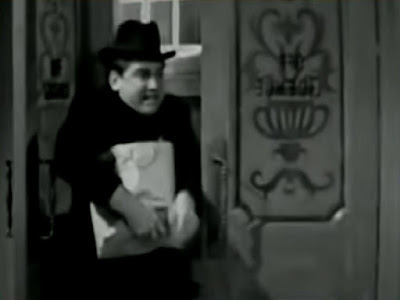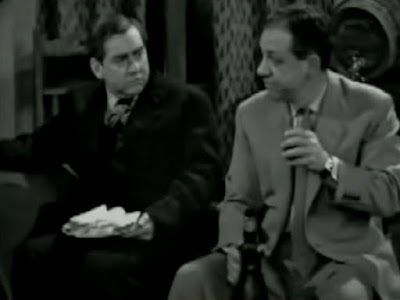To a fan baseball has many faces, and many images. It is the quintessential all-American sport – from 10-year olds finding their feet in Little League to the stepping stone of the Triple-A level to the big-time of the Major American and National Leagues.
It is a profitable business, with TV revenue, advertising and sponsorship deals – not to mention payrolls – which put both modern European football and the microcosmic world of Formula One into the shadow creeping across Oracle Park.
Baseball also has its own culture, its own rituals – some would say it is a religion all of its own. The ghost of the Bambino, Babe Ruth, may have been exorcised from the creaking concrete of Fenway Park, but the Curse of the Goat – where a live goat was thrown from the stands onto the field – still haunts the Cubs, and the Giants franchise has never won a World Series on the west coast. Tradition still dictates in the face of commercialism – there are no shirt or team sponsors – and the game has not changed significantly in its lifetime.
So with such a multi-layered sport, how do you write about it? How do you put down in pen and ink the multiple and complex emotions, feelings and observations of a single game of baseball?
For a baseball journalist, like any sports journalist, there are a few approaches – the basic, emotionless game report; the descriptive and analytical game review; or the instinctive, emotional game reaction. Writing reports and reviews can be taught in night school. Writing like Red Smith’s cannot.
Walter Wellesley Smith was born in Green Bay, Wisconsin. He started out as a baseball writer in 1929 for the St. Louis Star-Times. In 1936 he moved to Philadelphia – home of the Phillies – and then in 1945 on to the New York Herald Tribune. It was there he wrote his baseball column for the next thirty-seven years. In that time he would cover predominantly the three East-coast teams – the New York Yankees, New York Giants and the Brooklyn Dodgers – and then the NY Mets. His attitudes towards the game ranged from commenting that it was only “dull to dull minds” to his belief that the 90 feet between the bases on the diamond was “the nearest to perfection that man has ever achieved.”
Such phrases and more are captured in this compilation of the best of his columns between 1945 and 1981. Some detail games to which the modern fan will pay little heed, as they would a pre-war game of football or a pre-F1 motor race. Others catalogue those moments baseball fans will talk about forever. But what of the casual, wrong-side-of-the-Atlantic fan?
I went through a somewhat unforeseen evolution from F1 fan to baseball fan after I stumbled upon it twenty three years ago, when bouts of insomnia forced me into watching what I thought was a quaint US version of rounders live on late-night Channel 5. I have had to learn baseball from TV. I’ve had to work out how runs are scored, what happens when a batter fouls a ball on a 3-2 count, what RBI and ERA and GB mean, who the hell Babe Ruth was...
I could have done with Red by my bed. This is a multi-layered book with many faces and many images. Appropriately. It is an anthology first and foremost, celebrating the journalism of Red Smith. It is a history book, charting the story of baseball through “the game’s greatest years.” It is a reference book, citing the time when the Giants and Dodgers had a three-thousand mile road trip they never returned from, as well as the births and deaths of clubs, franchises, players and dreams.
But above all, Red tells us a massive, continuous 36-year story. The individual chapters are vignettes – snapshots of life as lived by the inhabitants of Baseball Land – where the ghosts of Cooperstown and Wrigley Field play dice with the multi-millionaire glitzy primadonnas pinpricking their way onto the diamonds. The poetic, descriptive nature in which he illustrates the scenes being played out before his ever-enthusiastic bespectacled eyes is reminiscent of bible verses or song lyrics or passages of the Mabinogion.
However the poetry isn’t always serene and celebratory. One such episode stands out above all else. In 1957 the National League president described the removal to the West coast of not only New York’s oldest club – the Giants – but also their arch-rivals, the Dodgers from over the river in Brooklyn, as demonstrating that his league was “a progressive organisation…” At which point Red “asked permission to leave the room”. In a post-season column he scathingly labelled it a “despoliation of two…valuable franchises” and an “abject surrender of the world’s greatest market”, the “boldest step backward”. He didn’t stop there, in the very next paragraph describing the move in such choice terms as “unrelieved calamity”, “grievous loss to the city”, a “shattering blow to the prestige of the National League” and “an indictment of the men operating the clubs and … governing the city”.
Red’s writing was not only that of a baseball commentator, but that of a baseball fan. He openly deplored the uprooting of the Giants and the Dodgers – as modern writers deplored the cold-blooded execution that has put an end to Major League baseball in Montreal this year. Fifteen days earlier, at the end of the regular season, his final New York Giants match column was headed with the title “A Wake for the Giants”. He wrote it as he would an obituary, poring over details such as how the Giants were the oldest club in New York, how they had come to be named and reminiscing – with copious quotes – about their ballpark on 110th Street and one of their more “exuberant” managers James Mutrie.
This mourning column and its snarling, indignant partner were examples of the passion Red had for the game, and how he wasn’t afraid to let the world – and the club owners – know how these monumental decisions were being received. Red’s writing was quintessential, word-on-the-street, voice of the fan journalism. They were the thoughts of the man in the stands, the child with the mitt, the girlfriend of the ball fan, the mother of the relieving pitcher, the father of the third baseman.
The book is packed with World Series reports; each year’s as lovingly crafted a portrait of the deciding game as the next. The natural ability of Red’s writing is never forced. Pennants, divisional series and championships are painted like a Manet masterpiece, with enough subtlety for the casual reader, enough detail for reference, and some exquisite splashes of colour. Red seems to allow the intense emotion of big postseason games to spur him to new heights in idiom and simile – to push the boundaries of textual construction and embellishment.
One such example – perhaps his stand-out moment, perhaps his most famous phrase – came in 1951. Bobby Thomson hits a home run in the final inning to help Red’s beloved New York Giants overhaul the Brooklyn Dodgers – their bitter rivals – 5-4 in the final game of the three-match series which decided the National League pennant. Red leads his column, headed “Last Chapter”, with the following words:
"Now it is done. Now the story ends. And there is no way to tell it. The art of fiction is dead. Reality has strangled invention. Only the utterly impossible, the inexpressibly fantastic, can ever be plausible again."
He then went on to describe, in his storytelling mode, how the Giants had fought back from 4-1 down in the bottom of the ninth inning. And how they had then gone on to win. Finally, how the emotional fraughtness of tying the outright championship with Brooklyn, the see-saw of the three-match playoff, was lost in the euphoria of victory, and how it tasted as sweet off the field as on. Fifty years later, I found myself seeing that episode in baseball history as clear as the satellite feed from ESPN.
Sportswriters of the quality of Red Smith’s ilk are not prevalent in today’s media. If you want to know how to bring your favourite (or favorite if it’s American) sport to life, then read someone like Red. And I’ll leave it up to you how you choose to read this book. Use it as reference, use it as a historical archive.
Or you could curl up with a hotdog and a soda and let a talented writer spin you off to the world of the diamond.
























